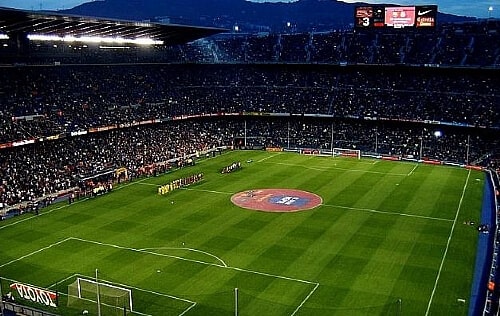Prior of selecting a passive stand-off spectral imager for hazardous gas applications one has to ascertain that there is a good match between the measuring system’s performance and the parameters of the specific application which the system will be used for.
These parameters vary from application to application: whether it is only for detection and alarm, or for detection and identification of a single gas type, or for detection and singling one gas out in a mixture, the system configuration and performance may also vary.
Just to mention some application dependent parameters:
path concentration of the gas or mixture in question, size of the space to be monitored, distance between gas leak and the observation location, speed of leak development and its dynamic behavior, atmospheric conditions, shape of the contaminated region and others all may affect the system’s choice.
Some of the corresponding system factors to consider are gas identification capability (related to spectral resolution), sensitivity to the appearance of small leaks and to small changes of gas amounts, measurement time, field of view (FOV), spatial coverage range and spatial resolution, and maybe others. It can be appreciated from here that this matching between application requirements and technical solution may be a complex affair. Needless to say, eventually there are also trade-offs to settle, including technical and budget related. This document tries to give a small taste of the type of considerations that come up in such an endeavor.
Spectral Range
A remote gas imager is sensitive at least in one of the so-called atmospheric windows, the spectral ranges in which the atmospheric in absorption and scattering are low and the transmittance is high (see in Figure 1, the ranges 2 to 2.5, 3 to 4.1, 4.3 to 5.5 and 7.5 to 12 microns as examples). The system’s spectral range must include the spectral features of the chemical species of interest. Among the above spectral ranges, probably the most popular one is the 8 to 12 microns. There are reasons for this: i) many large gas molecules have vibrational energy states absorbing these photon energies, and ii) a passive system must use naturally emitted infrared radiation, which is strongest in this wavelength range at room temperature.
_20210215151759.065.jpg)
Red: Atmosphere transmittance through 1 kilometer of urban air Blue: Ammonia
Selectivity - Spectral Resolution
_20210215151841.737.jpg)
Gas spectral features are like unique signatures. Selectivity is the ability to distinguish between different gases and is directly related to spectral resolution: obviously, if two gases have absorption lines which are close to each other in the wavelength scale, the spectral resolution of the system must be high enough to resolve these features, if the goal is to distinguish between these gases. In other words, spectral resolution allows the identification of signatures, and through them, of their owners.
To a certain limit, the higher the spectral resolution, the higher the selectivity will be. However this parameter is very significantly related, for example, to measurement time and price, so from here the pressing need to consider this trade-off. The above figure shows the infrared absorption spectra of Propane and Sulfur dioxide. Both are in the same region between 7.2 and 7.7 micrometers and overlap significantly, but their shape is different. This is an example in which, lacking enough spectral resolution, the two gases cannot be distinguished from each other.
Most passive spectral gas imagers have a spectral resolution between 5cm-1 and 32cm–1. The coarser resolution is typically used for searching and detecting without definite identification. The finer resolution is typically used for more detailed analysis and identification of gases on interest.
Sensitivity
_20210215151909.174.jpg)
The system sensitivity is a very important parameter and is usually characterized by a noise figure such as the Noise Equivalent Temperature (NET) or Noise Equivalent Spectral Radiance (NESR). The NESR is a measure of the minimum radiance change detectable by the imager in a specific spectral range. The sensitivity usually improves with slow phenomena allowing longer measurement time because then the data can be averaged over time and because high frequency noise can be filtered out. So the trade-off here depends on the characteristic time of evolution of the phenomenon to be monitored. Sensitivity comparison between various instruments must be done at equal FOV and IFOV (the angular size of each pixel), at equal spectral resolution and measurement time. In typical passive gas imagers, an NESR of 10–8 W/cm2/sr/cm–1 with a spectral resolution of 5 cm–1 in the IR thermal range of 7.5 to 12 microns meets the detection and identification requirements. The SR-7000 based gas imager of CI Systems can be used to identify a gas of interest at a distance of few kilometers.
FOV & IFOV

The field of view is the angular size of the region that the sensor interrogates as seen from the sensor. The instantaneous field of view (IFOV) is the angular resolution or the extent of a single pixel.
Ideally, the instrument IFOV should not be larger than one half the dimension of the object to be detected (for example, a gas cloud).
If the instrument IFOV is larger than this value, the signal usually includes a contribution from the background as well as target radiation. In this case the information carrying signal from the gas is decreased, leading to lower sensitivity.
Detection performance – Calibration
A spectral gas camera, as any other measurement system, has to be periodically recalibrated. Especially for fixed installations, it would be very convenient if such a system could be automatically recalibrated without human intervention. Built-in standard IR sources (such as blackbodies) are used to correct for electronic drifts affecting image quality over time and to maintain system calibration with respect to the gas path concentrations of interest.
CI Systems is a world leading manufacturer of high-end blackbody radiation sources and testers of infrared electro-optical systems. The company takes advantage of its 35 years of experience in all aspects of IR radiometry to produce high quality solutions for hazardous gas in detection and imaging.
A Spectral Camera Makes All the Difference